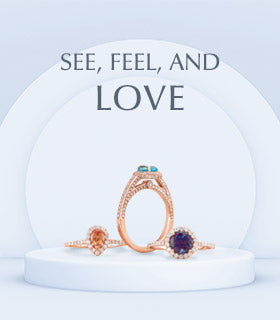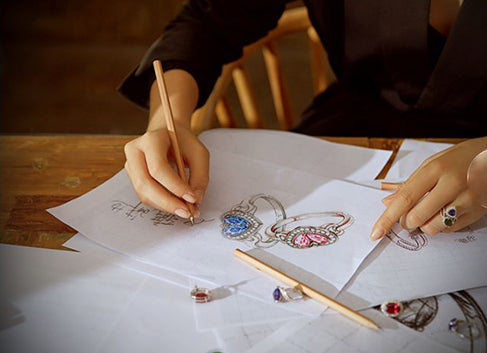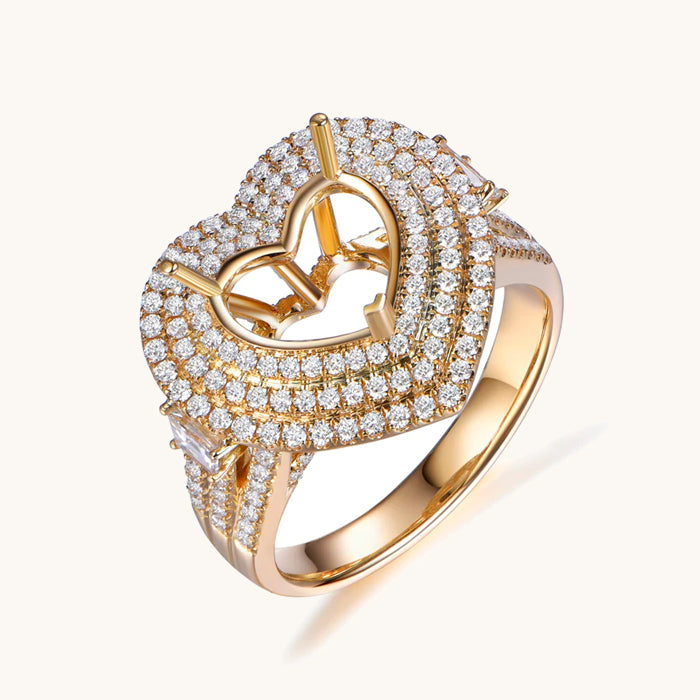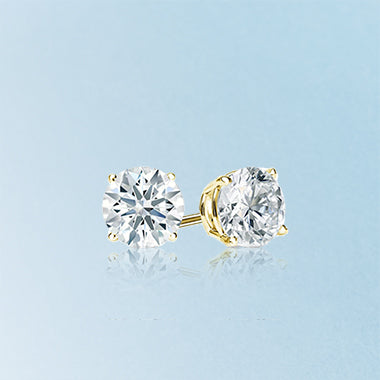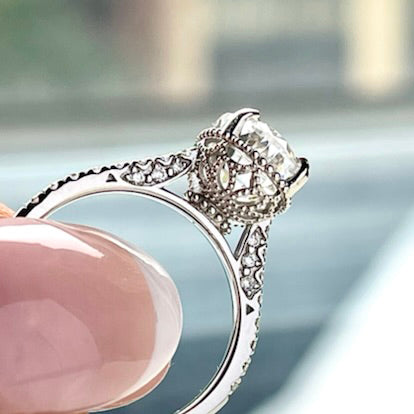We can make a wedding ring that matches your engagement ring perfectly! Please send us photos of your ring (intl.logr@gmail.com), and we will walk you through the process with your particular style. We can make the task of matching even the most complex ring easy and straightforward. The text below outlines the steps we take for different styles of ring.
Taking Measurements
It’s best to use jewelry calipers when measuring your engagement ring. You may have had a local jeweler take measurements while you were shopping for alternatives. However, photos of the ring against a millimeter ruler and the sizes of the gemstones in millimeters will do in a pinch.

Once we have the dimensions and the chosen design, we will make a CAD model of the wedding ring so you can review the style and fit of the matching wedding ring before we craft it.

Raised Solitaire
For a raised solitaire engagement ring, you can have a straight wedding band that sits flush against your engagement ring. For this kind of ring, we need:
- The shank height (A) and width (B).

Classic Solitaire
In the classic solitaire engagement ring, the basket holding the center gem sits flush with your finger, and you will want a wedding ring with a curve that fits around this basket.
For this kind of ring, we need:
- The shank height (A) and width (B)
- The width of the basket at base and top (C,D),
- The length of the basket at base and top (E,F)

Large curve
Your engagement ring may have accent stones. If so, the matching wedding band will need a larger curve.
For this kind of ring, we need:
- The shank height (A) and width (B)
- The width of the basket at base and top (C,D),
- The length of the basket at base and top (E,F)
- The length of the accent stones (G). Alternately, if you know the sizes of the center stone and the accent stones, we can calculate the size of the basket from this information when we create the CAD model of the wedding ring.

Geometric
Your engagement ring might have a complex geometry.
For this kind of ring we need:
- The same measurements as for the large curve ring above, and
- The width and height of each major inflection point. For instance, the example below adds measurements for the width and height of the second curve. (H, I, and J).

